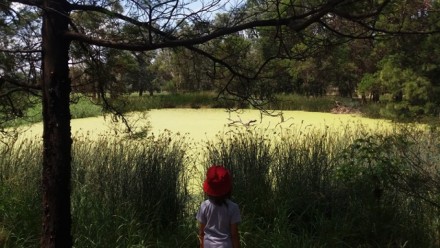Building resilience to floods requires transformative action to tackle climate change
Share
Health practitioners have the opportunity to contribute their expertise to help reduce the health consequences of climate disasters across the prevention, preparedness, response and recovery phases of disaster management, say the authors of a Perspective published today by the Medical Journal of Australia.
Apart from the acute health consequences of extreme weather events -- deaths from drowning, injuries, poisonings and infections -- climate disasters interrupt treatment and overall health care, exacerbating conditions or even causing deaths, wrote the authors, led by Professor Sotiris Vardoulakis, Professor of Global Environmental Health at the National Centre for Epidemiology and Population Health, Australian National University.
“Underlying vulnerabilities, including obesity, diabetes, cancer, mental illness and other non-communicable diseases (NCDs), complicate disaster recovery efforts in communities affected by extreme events,” they wrote.
“Interruption may be caused by loss of belongings including medication, damaged transport routes, reduced health services, disrupted telecommunications, loss of power, and evacuations, often compounded by disrupted sleep, stress and reduced access to healthy food and safe water.”
Vardoulakis and colleagues pointed out that health professionals have responded heroically to COVID-19, bushfires and floods over the past 2 years “but it is not sustainable in the long run”.
“Extreme events, pandemic fatigue, overstretched clinical services, spiralling demand for mental health services, and staff burnout could drive the health care workforce to collapse,” they wrote.
“Beyond the health system, the COVID-19 pandemic has altered the social capital (ie, community attachment, solidarity and social trust) and exposed health inequities in our communities.
“Disaster preparedness and recovery plans should be developed in partnership with disability organisations and community grassroots, including Aboriginal and Torres Strait Islander communities, to ensure that scientific knowledge is combined with local knowledge gained from experience and built from the ground up.”
Vardoulakis and colleagues called for:
- "[the development of] a coordinated cross-sectoral whole-of-system response (health, environment, land-use planning, social housing) to floods, strongly focusing on long term public health prevention and preparedness for more frequent and intense extreme events; this should incorporate meaningful community engagement, including Aboriginal and Torres Strait Islander, culturally and linguistically diverse, and socio-economically marginalised communities, to build social cohesion, reduce inequities and develop culturally appropriate risk communication strategies and person-centred adaptation plans;
- “[the strengthening of] non-communicable disease (NCD) prevention, including mental health and wellbeing services, particularly for rural and remote communities disproportionally affected by environmental change and extreme events;
- “[the implementation of] a stronger environmental public health surveillance for infectious diseases and NCDs, and climate-informed predictive models and early warning systems linked to emergency, public and mental health services;
- “[the establishment of] a sustainable health unit (similar to Greener National Health Service in England) that will help improve the health sector’s resilience to climate and health emergencies, and monitor and reduce the carbon footprint of health services; and
- “[an increase in] research capacity and capability and identifying gaps in local service delivery, communication and coordination, with a strong focus on the evaluation of interventions aiming to increase health sector and community resilience, particularly of at-risk populations, to floods and other climate disasters.”
*This media release was originally published by the Medical Journal of Australia, and has been reproduced in full above. You can see the original media release here.















